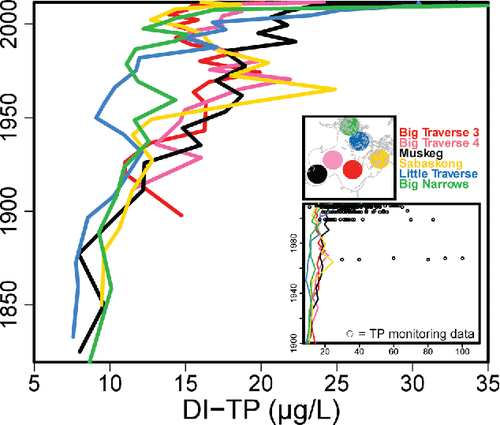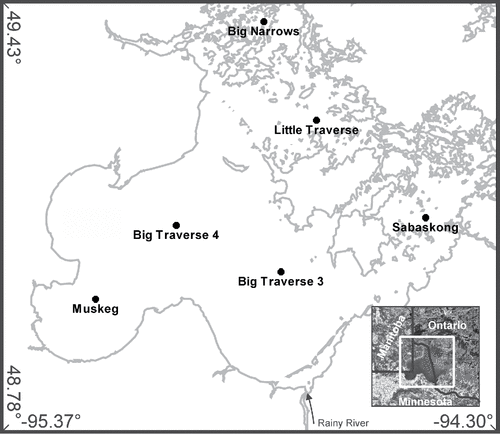Figures & data
Figure 2. Long-term data from Lake of the Woods and the surrounding region. Plots (a–c) detail measurements of N (total Kjeldahl, total nitrates, total organic), TP, and the N:P atomic ratios. P data include measurements from the southern basin and Fourmile Bay, just downgradient of the Rainy River outlet. Ratios in plot (c) include TN and dissolved inorganic N (DIN) relative to TP. The ranges of data indicating limitation of algal growth by either nutrient (Bergström Citation2010) are also provided. Plot (d) indicates available data on N compound deposition from atmospheric monitoring stations near the lake. Plot (e) summarizes lake catchment population and agricultural activity. Plot (f) provides minimum, maximum, and mean annual atmospheric temperatures in the region. Plot (g) provides trends in total annual precipitation and ice-off day. Plot (h) provides historical wind speeds from a nearby station (International Falls) plotted with a running average. Plots (i) and (j) summarize the first 2 axis scores from a detrended correspondence analysis of diatom assemblages from each core. Lowess lines (plots d-h) are based on a span of 5 years, and DCA scores are connected (not fitted) to form a line for each core. Details of data sources are provided in Supplement A.
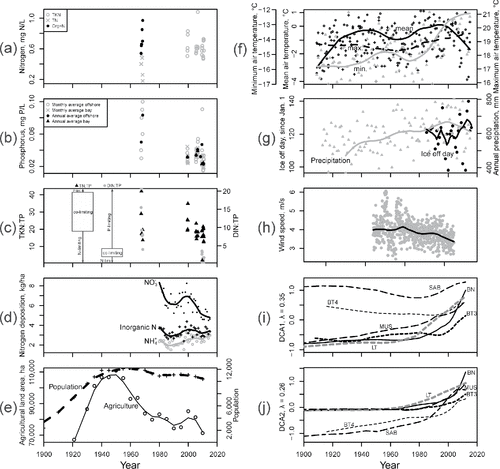
Figure 3. Proportions and accumulation rates of sedimentary components in cores collected from Lake of the Woods. Interval dates represent a constant-rate-of-supply age model applied to the 210Pb data. Basin-specific line plots are identified by their corresponding color in the heading.

Figure 4. Biogenic silica of 6 Lake of the Woods cores including sediment biogenic silica concentration (SiO2 wt %; mg/100 mg sediment) and flux (mg/cm2 yr). Also included are abundances of diatom valves.
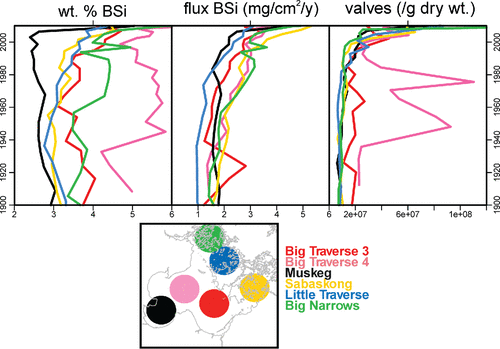
Table 1. Correlation coefficients among diatom-related variables measured from LoW sediment cores. No transformations were applied to variable data. *** = significant at P < 0.001; * = significant at 0.01 < P < 0.05.
Figure 5. Concentration (nmol pigment/g organic C) of fossil pigments and pigment derivatives preserved in 6 cores from Lake of the Woods. Pigments and derivatives are grouped by algae type or indicator value.
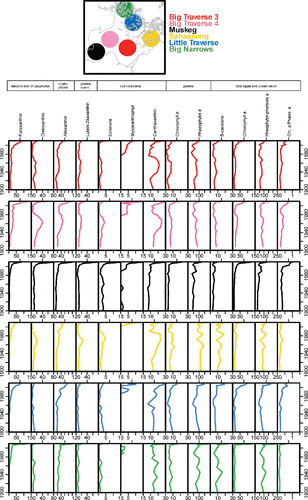
Figure 6. Downcore sediment trends for diatoms, chrysophyte stomatocysts, and phytoliths from Lake of the Woods. Data are presented as accumulation rates (/cm2/y) or relative abundance (%) to illustrate trends. The ratio of stomatocysts to diatoms is a unitless ratio. Basin-specific line plots are identified by their corresponding color in the heading.
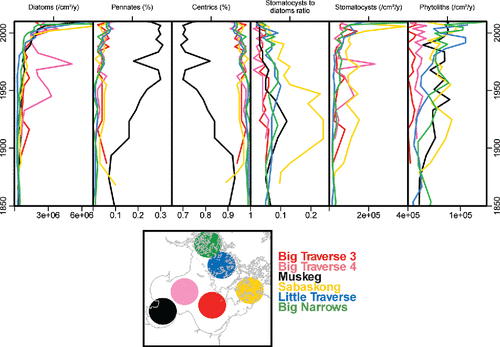
Figure 7. Stratigraphies of the relative abundance of dominant diatom taxa identified in sediment cores from Lake of the Woods. Interval dates represent a constant-rate-of-supply age model applied to the 210Pb data. Taxa shown occurred at a relative abundance of at least 4% in at least one sample in any core. Note that x-axes vary in scale.
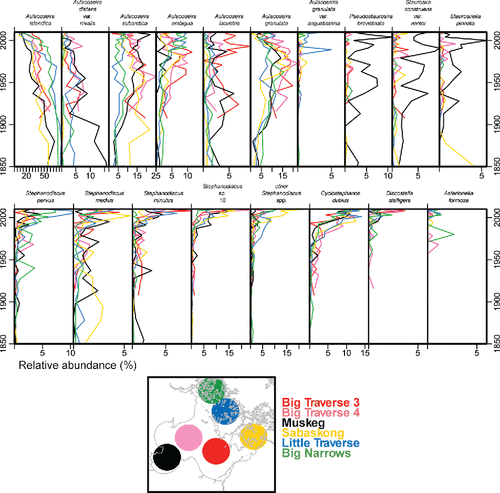
Figure 8. Sample and taxa scores from a NMDS analysis of fossil diatom assemblages in the Lake of the Woods cores. Sample scores are traced over time from the oldest sample analyzed for diatoms to 2012 (the sampling year). The year 1980 is marked on each trajectory by a star. See text for abbreviations used for key species, and the full list of taxa and codes is provided in Supplement B.
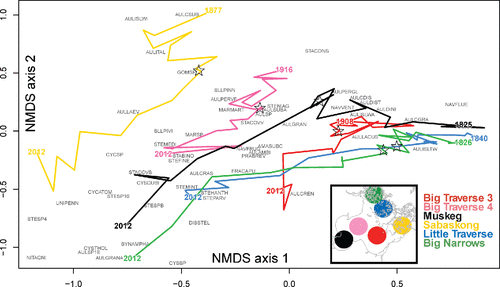
Table 2. Spearman correlation coefficients of diatom assemblage DCA scores against environmental variables. Parameters included are those with sufficient long-term data for a reasonable comparison and those with potential for direct influence on diatom communities. The number of fossil diatom samples used in each comparison is provided in square brackets. Significance of each correlation (t-test) is shown at P levels of 0.05 (*), 0.01 (**) and 0.001 (***). Units for each parameter are provided in .
Table 3. Correlations from a regression of diatom-inferred total phosphorus against axis 1 sample scores from a principal components analysis of sedimentary diatom assemblages. Asterisks indicate significant correlations (P < 0.05).
Figure 9. Diatom-inferred TP concentrations based on sedimentary assemblages from Lake of the Woods. Basin-specific line plots are identified by their corresponding color in the heading. The inset plot expands the DI-TP axis and includes TP monitoring data (source MPCA Citizen Lake Monitoring Program).
